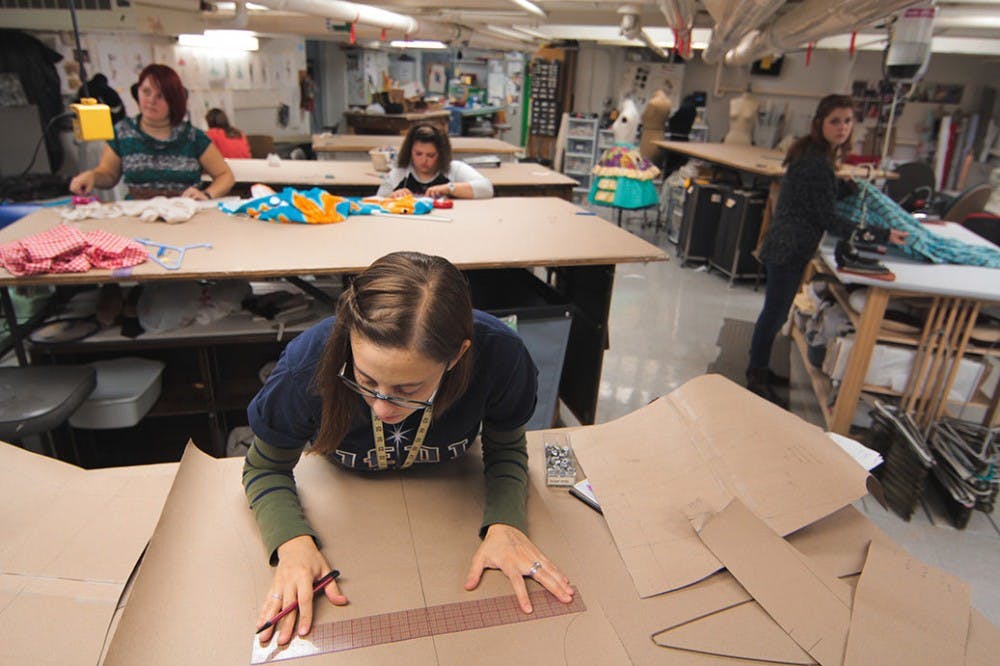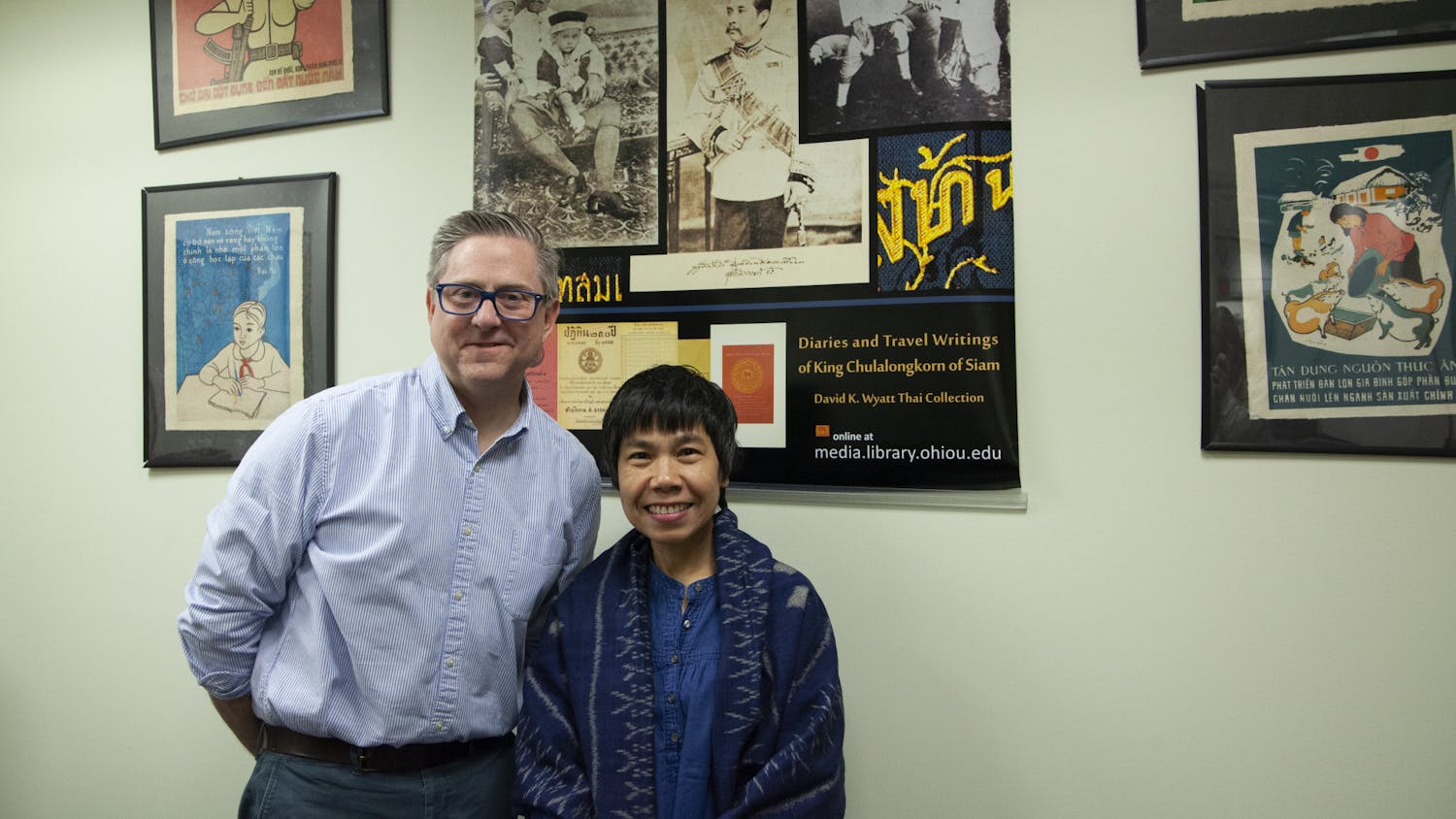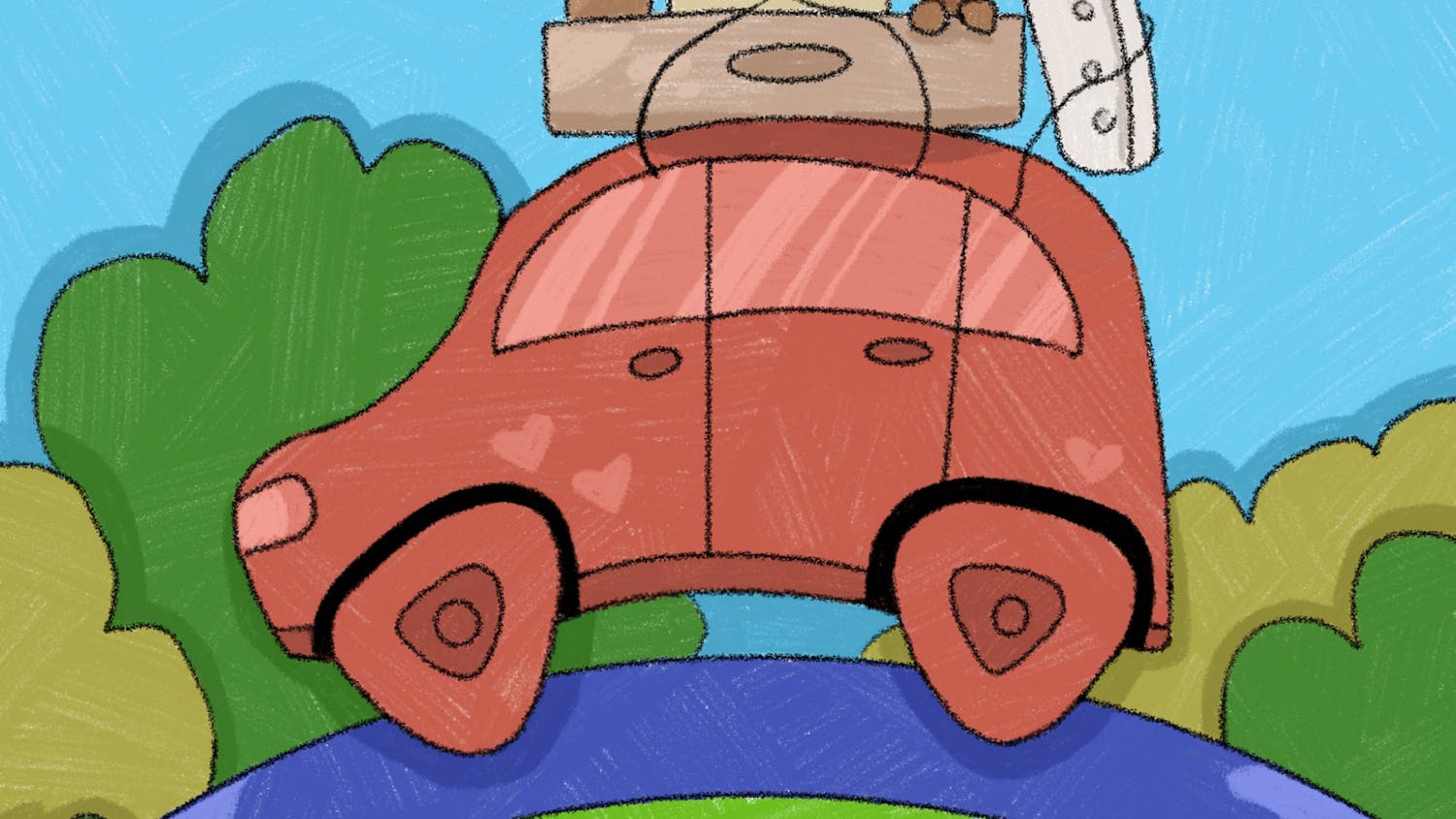Students create most of the clothing worn by actors in Division of Theater productions.
The Division of Theater’s first mainstage production “bobrauschenbergamerica” presented one major challenge: a man in a chicken suit must cross the stage in one scene.
This chicken suit was not something the department simply purchased at a generic Halloween costume store. It was a project the costume shop and craft shop student workers labored on for weeks. The play is now in its second week of performances in the Forum Theater in the Radio-Television Building.
Located in the basement of Kantner Hall, the costume and craft shops create all the costumes and costume accessories for the mainstage productions, style projects and the playwrights’ festival plays.
Undergraduate and graduate students staff the shops as part of their practicum classes.
“From 1 to 5 p.m., most of the departments act like professional theaters,” said Cassandra Paine, professor of costume technology and costume shop manager.
During that time, students hunch over cutting tables as the room fills with the constant buzzing of sewing machines and snipping of fabric, all with the goal of bringing characters to life.
“Without lights, you can’t see the actor. Without a stage, the actor has nothing to act on. Without costumes, you don’t know who the character is,” said Caitlin Cotter, a first-year graduate student studying costume design and technology. “With costumes, you can tell what the character’s story is, where they’ve been, where they’re going, what they’re goals are.”
The costume shop puts together the garments and clothes for the play. The craft shop handles costume accessories such as hats, shoes, wigs, armor and masks and also paints, dyes and distresses the garments for the costume shop.
Students essentially run the shop. Graduate students are typically drapers, who create design patterns or they’re first-hands who create mock-ups that stitchers sew. Drapers are at the top of the costume shop pyramid. Undergraduates are the stitchers.
Mock-ups are made out of cheaper fabric, typically muslin, that are used to adjust to the actor during fittings. This way, the more expensive fashion fabric, which is seen in the actual performance, isn’t wasted.
Mock-ups are also essential in the craft shop. A foam dog mask was manipulated to have the same structure as a chicken head to help the actor prep to wear the actual chicken suit.
“I’ve worked professionally … and it really prepared me for that,” said Cotter, a first-hand for both Fall Semester mainstage productions. “In the professional world, you’re not going to have a professor babysitting you to tell you what to do.”
Holly Cole, professor emeritus of costume design and costume craft, said the program is committed to placing students in high profile internships by developing their portfolios and skills through working on the division’s productions.
Zari Rose, a junior studying production design and technology, is a stitcher who said she has actually learned a lot without noticing.
Being a student labor shop has its advantages and disadvantages. The costume department received $16,150 for the entire previous academic year to create all nine shows. Paine said a Broadway size budget could be about $60,000 for just one show. On the other hand, Paine said the shops can do more with the budget because they don’t pay for labor.
With a smaller budget, Joanna Koefoed, professor of costume crafts and craft shop manager, said prioritizing and “bidding the show,” or estimating the labor and time needed to make a piece, is even more important.
“With the chicken, how long will it take to make the head, to make the body, to cover it in fur, to paint the tights?” Koefoed said. “You try to balance the needs of the show versus what you want.”
In the end, Paine said costuming is all about bringing the designer’s vision to life. For bobrauschenbergamerica, that vision is from Natalia de la Torre, a second-year graduate student studying costume design who collaborated with her other designers to figure out where this open-ended play would live.
The play’s nature to be open to interpretation demonstrates the importance of the design aspect of productions to inform the audience of the atmosphere of the play.
“It helps (the actors) see the character developing,” Cole said. “It’s interesting to watch them in a fitting and to see them end up moving in the way the character will move.”
@buzzlightmeryl
mg986611@ohio.edu






